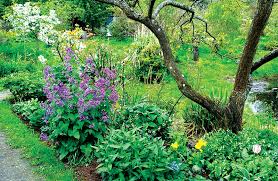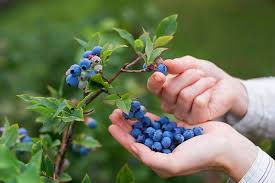Considering how to start a food forest? A food forest means creating a little piece of nature where you grow lots of different foods like fruits, nuts, and veggies. It’s like making a tiny forest that gives you tasty things to eat.
Why start a food forest? Well, it’s not just about yummy snacks; it’s also about helping the environment and making a happy home for plants and animals.
When you start a food forest, you’re like a gardener with a big heart. You plant not just one type of plant but many, creating a team of plants that work together. Some plants give shade, others make the soil better, and some attract helpful insects. It’s like having a plant party where everyone has a job to do, and the result is a healthy and thriving food forest.
Imagine stepping into your food forest and finding juicy berries, crunchy nuts, and colorful veggies ready to pick. It’s like having a magic grocery store right in your backyard. Plus, you can share the extra treats with your friends and neighbors, spreading the joy of your food forest.
Starting a food forest is also a way to be a friend to the Earth. You use less chemicals and let nature do its thing. It’s like telling the Earth, “Hey, I care about you, and I want to help you stay happy and green.” Your food forest becomes a small but powerful force for good, making the world a bit greener and healthier.
As you watch your food forest grow, you’ll see more than just plants. Birds will visit, butterflies will flutter by, and bees will buzz around. It’s like having a front-row seat to a nature show right in your own backyard. Your food forest becomes a home for many living things, creating a balance where everyone gets what they need.
Starting a food forest is not just about today; it’s about tomorrow too. You’re planting seeds of goodness that will grow into a beautiful future. So, when you decide to start a food forest, you’re not just growing food – you’re growing joy, health, and a little piece of paradise.
Read Also: The Systems of Sheep Production
How to Start a Food Forest

Starting a food forest is like embarking on a delicious adventure in your own backyard. To begin this green journey, follow these simple steps:
1. Choose the Right Spot: Find a sunny spot in your backyard where your food forest can soak up the sun. Plants love sunshine, and it makes them grow big and strong.
2. Plan Your Plants: Think about the fruits, nuts, and veggies you love. Pick a variety so your food forest becomes a diverse and tasty treasure trove. Consider how tall and wide each plant will grow so they all have enough space to spread their roots.
3. Start with the Big Ones: Plant the tall trees first. They’re like the guardians of your food forest, providing shade and protection. Fruit trees like apples, cherries, or peaches are great for this role.
4. Add Some Middles: These are the medium-sized plants that go between the tall trees and the ground cover. Think of berries, bushes, or dwarf fruit trees. They add layers to your food forest, like a delicious sandwich of nature.
5. Cover the Ground: Plant low-growing plants to cover the soil. This keeps it cool, prevents weeds, and makes your food forest look like a cozy, green blanket. Ground cover plants could include strawberries, herbs, or even sweet potato vines.
6. Be Friends with Beneficial Bugs: Invite good bugs to your food forest party. Plant flowers that attract bees and butterflies, and avoid using harmful chemicals. Let nature’s little helpers keep everything in balance.
7. Mulch for Success: Spread a layer of mulch around your plants. It’s like a comfy bed for your food forest, keeping the soil moist, preventing weeds, and giving your plants the extra boost they need.
8. Water Wisely: Give your food forest a good drink regularly, especially when it’s hot. Plants need water to grow, just like we do. But don’t drown them – find the right balance.
9. Patience is a Green Virtue: Your food forest won’t grow into a magical wonderland overnight. It takes time for plants to become big and produce tasty treats. So, be patient and enjoy the journey.
10. Share the Bounty: When your food forest starts giving you yummy things to eat, share the joy! Give some to your friends, family, and neighbors. Sharing the harvest makes your food forest even more special.
Starting a food forest is about creating a little piece of paradise, a green haven where you and nature work together to make something beautiful and delicious. So, put on your gardening gloves and let the food forest adventure begin!
Read Also: Feed Lot Fattening of Rams Practice
Benefits of Starting a Food Forest

Starting a food forest comes with a bouquet of benefits that extend beyond just the joy of harvesting delicious fruits and vegetables. Here are some of the perks:
1. Abundance of Fresh Food: A food forest provides a constant supply of fresh, organic produce right from your backyard. Enjoy the taste of homegrown fruits, nuts, and veggies, promoting a healthy and sustainable diet.
2. Biodiversity Boost: By planting a variety of trees, shrubs, and ground cover, you create a diverse ecosystem. This biodiversity attracts beneficial insects, birds, and other wildlife, promoting a balanced and thriving environment.
3. Environmental Friendliness: Food forests are kind to the Earth. They reduce the need for chemical fertilizers and pesticides, fostering a more natural and eco-friendly approach to gardening. This helps protect soil health and water quality.
4. Soil Enrichment: Different plants play different roles in a food forest. Nitrogen-fixing plants enhance soil fertility, and the leaves that fall from trees act as natural mulch, enriching the soil over time. This creates a self-sustaining and nutrient-rich environment.
5. Water Conservation: Once established, food forests often require less water compared to traditional gardens. The layers of vegetation help retain moisture, reducing the need for frequent watering. This water efficiency is both practical and environmentally responsible.
6. Climate Resilience: The diverse range of plants in a food forest can handle various weather conditions. This resilience makes your garden less susceptible to extreme temperatures, droughts, or heavy rains, ensuring a more reliable harvest.
7. Low Maintenance: Food forests are designed to mimic natural ecosystems, and once established, they can be surprisingly low maintenance. The self-regulating ecosystem minimizes the need for constant intervention, allowing you to enjoy the garden with less effort.
8. Educational Opportunities: If you have children or are part of a community, a food forest offers a living classroom. It provides hands-on learning experiences about ecology, botany, and sustainable living. It can be a source of knowledge and inspiration for all ages.
9. Aesthetic Appeal: Beyond practical benefits, food forests are visually appealing. The layered structure, seasonal changes, and the diversity of plants create a beautiful and serene landscape that enhances the aesthetics of your outdoor space.
10. Community Building: Sharing the abundance from your food forest fosters a sense of community. Whether it’s with neighbors, friends, or local organizations, the act of sharing your harvest strengthens social bonds and creates a positive impact beyond your own garden.
In essence, starting a food forest is not just about growing food; it’s about cultivating a harmonious relationship with nature, reaping a multitude of benefits, and contributing to a healthier and more sustainable way of living.
Read Also: Dangers of Mole Rats to Your Farm
